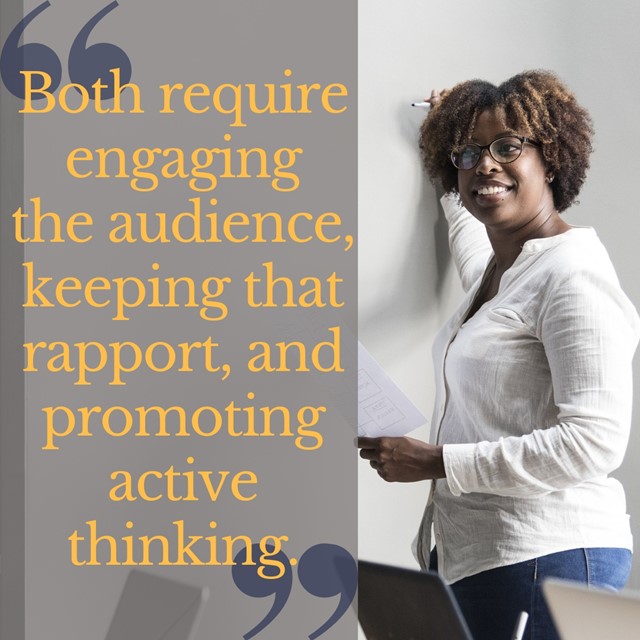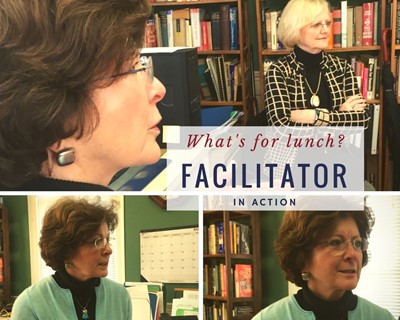
“With facilitating, you’re challenged to manage the group to agreement while in public speaking, you tend to be persuading the group to your point of view, but both require engaging the audience, keeping that rapport, and promoting active thinking."
– Buckley Coach Katie Pope
She had been a nursing administrator with an Atlanta hospital when a corporate training company recruited Katie Pope to become one of their facilitators. “Little did I know that this would be the beginning of a 20-plus year career for me,” she says.
A veteran in leading corporate seminars in sales, leadership, and customer service, Katie says there are lessons she’s learned from facilitating that she brings to her public speaking instruction at The Buckley School.
 Katie facilitating the most important decision in the office: What are we doing for lunch? Wonder what she's reading from Karen's body language...
Katie facilitating the most important decision in the office: What are we doing for lunch? Wonder what she's reading from Karen's body language...
Here are three things Katie says she’s learned from facilitating that can help with your next presentation.
1. Understand who's there.
Speakers, like facilitators, are advised to know who makes up the audience, what their concerns and priorities are, and where the differences in opinion lie. For a presentation, that advance information helps shape the content.
But the lesson from facilitation is to prepare with that information in mind—then keep learning about your audience as you go. To do that, Katie says, you need to pay attention to the next two things.
2. Dig below the surface.
Ask thought provoking questions, says Katie, ones that get beyond superficial answers. “Questions don't have to be long and complicated. Often times, it’s the short, simple question that stimulates deeper thought.”
In a speech, Katie says, she applies these same principles when using rhetorical questions to get the audience actively thinking.
3. Look and listen.
As a facilitator, Katie finds this is where she learns about her audience at a deeper level, something she thinks can be overlooked in a public speaking or business presentation setting.
“When I’m facilitating, I not only listen to what and how participants respond, I observe body language. Is it consistent with what they're saying? Are they still engaged?” she says.
“In a presentation, the speaker can benefit from using the same concepts, even if not having a direct conversation with the audience. Note body language. Consider condensing and moving on if you’re getting cues that your audience isn’t interested. And when the audience is engaged, let them enjoy it—pause for applause and laughter.”
The ability to keep learning about the audience as a speech unfolds, Katie says, is probably the greatest skill that facilitating has helped her hone.
“Audiences can surprise you,” she says. "Some don't respond the way you anticipate. Being open to that new information and adapting is a skill I’m always encouraging public speakers to develop.”






